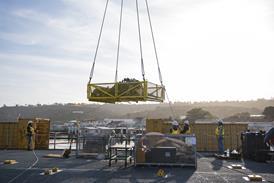Steve Nichols/DUBAI
The Internet is the hot business tool of the 1990s and usage is predicted to continue increasing exponentially in the next millennium. So it is not surprising that passengers are starting to demand Internet access on board aircraft too.
Honeywell (E712) is demonstrating its In Flight Email system that promises future flyers access to both Email and the World Wide Web (WWW) at 30,000ft. But as John Riley, Honeywell's manager Aviation Services, admits there are still problems to be overcome.
"We have the technology to put Internet on a plane right now, but airlines need to think about how to make it as easy for the passenger as possible and how they might charge for the service," he says. "Passengers ideally want to use their own laptops, but this causes problems with interfacing and software.
"The easiest option is to set up a different Email address for passengers while they are airborne and provide the proprietary software, but he or she needs to know this in advance."
Communications
Honeywell's In Flight demonstration uses its own Email client software and a ground-based server to provide cost-effective communications to and from the aircraft using the Inmarsat network.
Honeywell is also looking at a Smartcard system that could hold a passenger's information, including Email address, credit card information, likes and dislikes. Their airborne Email address could remain the same whenever they fly and their web content could be tailored to their own interests. This raises another question: Should a plane carry a server with limited web content on it or should all WWW material be uploaded on demand?
"But as bandwidth increases a permanent link could become viable - even to the extent of an Internet Satcom link being used in preference to existing ACARS systems for flight routing, manifests, maintenance data and other status reports.
"We're working with airlines to try and anticipate demand, but it is all about payback. If an airline can make a good business case for Internet we can supply."
Source: Flight Daily News























